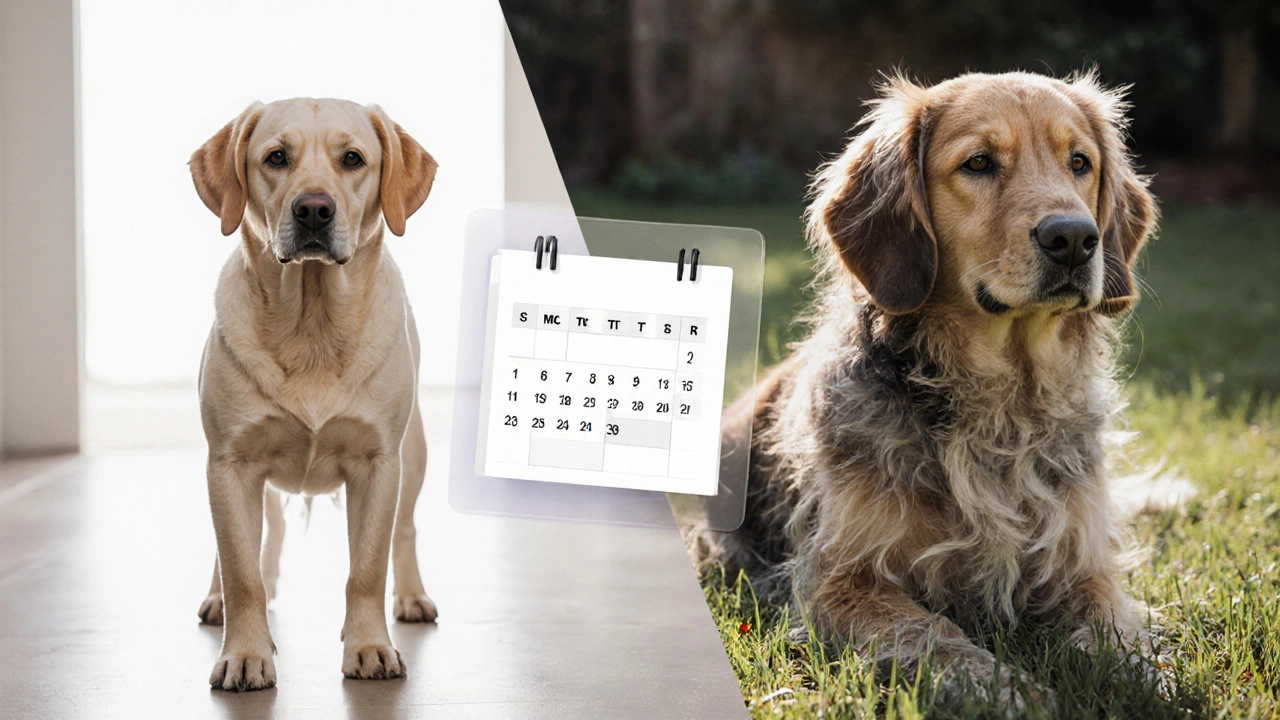At-Home Dog Grooming: Easy Tips for a Calm, Clean Pup
When working with At-Home Dog Grooming, the practice of cleaning and maintaining a dog’s coat, nails, ears, and paws at home. Also known as DIY dog grooming, it saves money and strengthens the bond between you and your pet. At-home dog grooming isn’t just about a quick brush‑off; it’s a routine that blends safety, comfort, and consistency.
One of the first pieces of the puzzle is Dog Grooming Tools, brushes, clippers, nail grinders, ear cleaners, and grooming wipes designed for home use. The right brush removes loose hair and prevents matting, while a low‑vibration clipper reduces noise that can spook a nervous pup. Pairing these tools with a Grooming Schedule, a weekly or bi‑weekly plan that aligns with your dog’s coat type and activity level ensures you stay ahead of tangles and skin issues. A clear schedule also lets your dog learn what to expect, turning grooming into a predictable, low‑stress habit.
Keeping Calm: The Role of Calming Aids and Stress Signs
Even with the best tools, some dogs get anxious during grooming. This is where Calming Aids, pheromone sprays, calming chews, or low‑dose soothing oils approved for dogs come into play. These aids work by reducing cortisol spikes, making the grooming session smoother for both of you. Watch for Dog Grooming Stress Signs, raised tail, rapid panting, lip licking, or attempts to escape the grooming area. Spotting these early lets you pause, use a calming aid, and resume at a gentler pace.
The relationship between these entities forms a simple web: At-Home Dog Grooming encompasses a Grooming Schedule; it requires reliable Grooming Tools; Calming Aids influence Dog Grooming Stress Signs; and recognizing Stress Signs guides the effective use of Calming Aids. Understanding this web helps you design a grooming routine that feels natural rather than a chore.
Practical steps start with a quick inventory. Do you have a slicker brush for double coats? A stainless‑steel comb for short hair? Do you own a quiet clipper with adjustable blades? If any item is missing, add it to your shopping list before the next session. Next, draft a simple schedule: brush every other day, trim nails once a month, clean ears weekly, and give a full bath every six to eight weeks. Write it on a fridge note or set reminders on your phone—consistency beats occasional deep cleans.
When you’re ready for the first full grooming, choose a calm time of day, preferably after a walk or play session when your dog is already relaxed. Lay out all tools, turn on soft background music, and keep treats handy. Begin with a gentle brush, rewarding calm behavior, then move to ear cleaning, nail grinding, and finally the bath if needed. If your dog shows any Stress Signs, pause, offer a calming chew, and resume after a few minutes of petting.
Beyond the basics, many owners find that integrating a short pre‑grooming walk helps release excess energy, making the later grooming steps smoother. Also, keep the grooming area warm; cold floors can increase shivering and anxiety. Use a rubber mat to provide traction and prevent slips, especially when clipping around sensitive ears.
With these tools, schedule tips, and calming strategies in place, you’ll notice fewer mats, healthier skin, and a dog that actually looks forward to grooming time. Below you’ll find a collection of articles that dive deeper into each of these topics—everything from choosing the perfect brush for a wiry terrier to using pheromone diffusers for a nervous retriever. Let’s explore how to make every at-home grooming session a happy, stress‑free experience.
How Often Should You Groom Your Dog Each Year?
Learn the ideal number of grooming sessions per year for any dog breed, factors that affect frequency, and how to create a practical grooming calendar.
